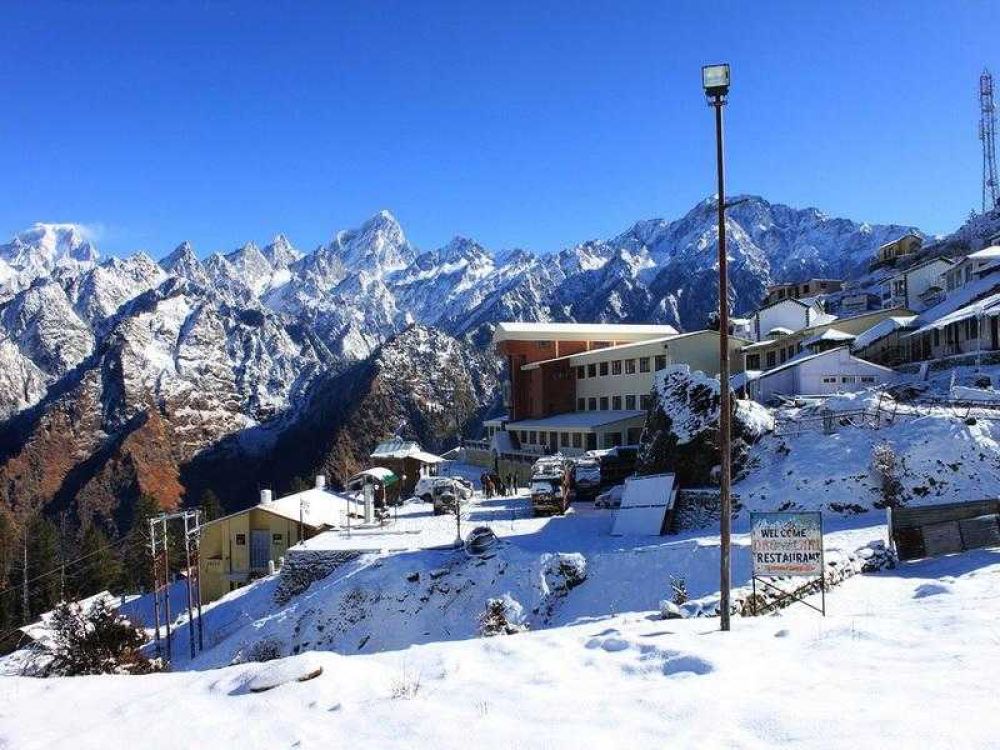

Govindghat is a small town in Chamoli district, Uttarakhand, India, nestled amidst the Himalayas. It is primarily known as the starting point for the trek to the sacred site of Hemkund Sahib and the Valley of Flowers National Park. A significant pilgrimage spot for Sikhs and a renowned trekking destination, Govindghat has been welcoming visitors for many decades.
The history of tourism in Govindghat is intrinsically linked with the Sikh shrine, Hemkund Sahib, and the Valley of Flowers. Hemkund Sahib, the highest gurudwara in the world, has been a pilgrimage site since the 1930s after the place was identified by Sant Sohan Singh and Bhai Modam Singh as the meditative site of the tenth Sikh Guru, Gobind Singh. Following the discovery, infrastructure slowly developed to support the influx of pilgrims. The construction of motorable roads and lodges facilitated easier access and stay for the visitors, thus promoting tourism. The Valley of Flowers, a UNESCO World Heritage Site, was discovered by British mountaineers Frank Smythe and R. L. Holdsworth in 1931. They were captivated by its ethereal beauty filled with alpine flowers and lush greenery. In 1982, the area was established as a National Park to preserve its biodiversity. As the news of this enchanting place spread, Govindghat's importance as an access point grew, attracting nature lovers and trekkers worldwide.
Auli, located near Govindghat, is a premier skiing destination in India. Known for its snow-capped mountains and clean environment, Auli’s entry into tourism spotlight happened in the late 1970s and early 1980s when its potential for skiing was realized. The development of Auli as a ski resort was deliberate and aimed at providing tourists with an experience on par with international standards.
With the advent of adventure and eco-tourism, the regions of Govindghat and Auli have seen a rise in interest from tourists seeking off-the-beaten-path experiences. Auli has hosted several national and international skiing events and competitions, which has significantly boosted its profile as a world-class skiing destination. Govindghat has benefited from the religious and trekking circuits with better connectivity, improved accommodations, and increased awareness about the region through social and digital media.
The latest trends in tourism around Govindghat and Auli focus on sustainable and responsible travel. Eco-friendly lodges and the emphasis on conservation practices are growing. The government and various organizations are also actively involved in maintaining trails, organizing cleanup drives, and ensuring that tourist activities do not harm the natural surroundings. In terms of experiences, there's an increasing demand for authentic cultural interactions and homestays that offer a taste of local life. Moreover, adventure sports such as skiing in Auli during the winters and trekking to Hemkund Sahib and the Valley of Flowers during the summers continue to be popular activities. The digital transformation has allowed for virtual tourism experiences, where people can explore these destinations from their homes, although the true allure of these pristine locations lies in their untouched natural beauty, experienced firsthand.
The COVID-19 pandemic has had an impact on the tourism industry of Govindghat and Auli, as it did on the rest of the world. Tourism numbers took a hit due to travel restrictions and safety concerns. However, as the situation has improved, with vaccination drives and health safety measures in place, there is a resurgence of tourists, especially those seeking nature-centric and less crowded destinations.
Govindghat and Auli represent the resilience and adaptability of the tourism industry amidst changing times. The blend of religious significance, natural beauty, and adventure sports continues to draw visitors, ensuring that tourism remains an integral part of the local economy and cultural exchange.